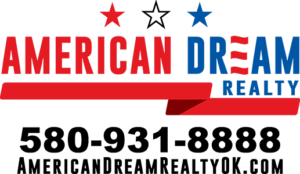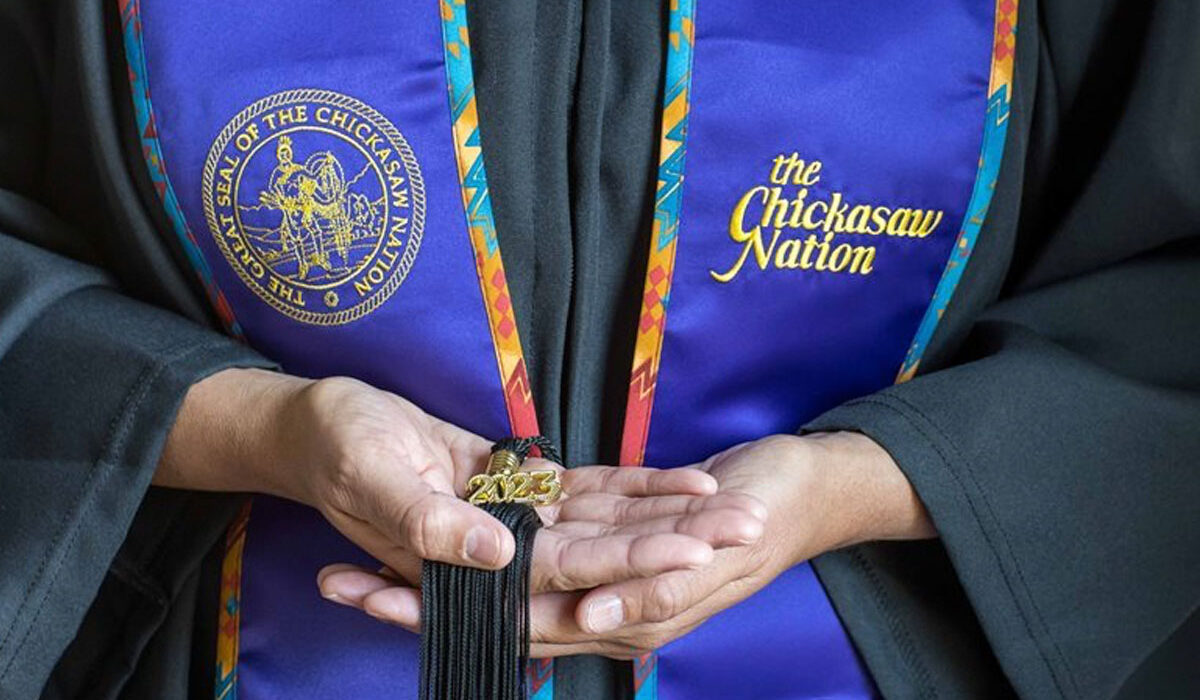Commitment to education a hallmark of the Chickasaw Nation
Release
Education has historically been one of the Chickasaw Nation’s highest priorities, and this year marks 40 years since the launch of two programs that forged a foundation for many modern-day education programs. 
Building a Foundation, 1983
The origins of Chickasaw Nation modern education programs can be traced to 1983, when the tribe began administering the Johnson- O’Malley (JOM) and Higher Education programs.
Formerly managed by the Bureau of Indian Affairs, the Chickasaw Nation’s management of the higher education program meant Chickasaw students would apply directly to the tribe for educational assistance instead of the federal government. Since its establishment, the program has grown exponentially.
In 2022, 6,000 Chickasaw students received $28.8 million in higher education grants and scholarships.
Previously managed by the Oklahoma State Department of Education, the Chickasaw Nation first contracted to administer the JOM program in 1983. The goal of the program is to provide supplemental programs designed to meet the specialized and unique educational needs of First American students.
Formerly authorized in 1934, the act was part of the “Indian New Deal” with the aim of providing funding to support First Americans receiving education, health care and other support, especially in rural areas. 
Currently, the Chickasaw Nation partners with more than 50 public schools in the JOM program with thousands of participating students. Since the implementation of those programs, the Chickasaw Nation has made tremendous strides to provide opportunities to Chickasaw youth.
Chickasaw Nation Governor Bill Anoatubby understands the importance of offering vital education services and its connection to the Chickasaw Nation’s success and sustainability.
“Our history has shown that providing our youth with learning opportunities not only nurtures individual development, it is vital to tribal progress,” Governor Anoatubby said.
“From our earliest negotiations with the English and a young United States, Chickasaws have sought educational advancements to gain social, political and economic ground.
“We strive to provide opportunities to our youth that will empower them with character, confidence and belief in themselves that with integrity, hard work and perseverance, they will be successful. Today’s children are tomorrow’s leaders. It is incumbent upon us to prepare them to lead our great nation into the next century,” he said.
Chickasaw leaders such as Piominko, who sought literacy training for his daughter as early as the 1700s, understood the essential role formal education could play in the tribe’s ability to adapt to change and overcome challenges. 
From 1820 through 1826, Christian missionaries operated both boarding academies and day schools in the Chickasaw historic Homeland.
Education in Indian Territory
Removal to Indian Territory led to the establishment of boarding and community schools in the new territory. Chickasaw leaders realized how different life would be for their people in Indian Territory. Leaders knew that for their people to compete and become economically and socially successful among the non-Native settlers, their children needed continued education to read, write and speak the English language.
The Chickasaw Nation opened Bloomfield Academy for girls in 1852, near present- day Achille, Oklahoma.
The tribe supplied most of the funds while Protestant missionaries controlled the schools’ operations, hiring teachers from New England colleges and academies.
Bloomfield was among five boarding schools the Chickasaw Nation opened after first writing into law the foundation of a tribal academy called the Chickasaw Manual Labor Academy in 1844. Other schools included the Collins Institute for boys as well as the Wapanucka and Burney Institutes for girls.
Chickasaw Nation schools ceased operations during the U.S. Civil War. Following the war, the reopening of these schools was highly prioritized.
In 1876, the Chickasaws reopened their boarding schools and fully controlled their operation. Chickasaw leaders shaped the institutions’ curricula and operated the schools on a contract basis. Most of the teachers were also Chickasaw. 
That same year, the Chickasaw Nation opened 11 neighborhood schools as the Chickasaw legislature passed a law increasing the number of elementary-level schools to 23.
Douglas Henry Johnston, a former student of Bloomfield Academy, served as the school superintendent from 1884 to 1897 prior to serving as Governor of the Chickasaw Nation.
While Governor Johnston was superintendent, he strived to popularize education among the Chickasaw people. As a result, the Chickasaw Legislature created a grant for the maintenance of each pupil.
Beyond funding elementary and secondary-level schools, the Chickasaw Nation also invested in the future of its young people by offering scholarships to qualified students to attend college or university.
In 1879, Richard Henry Pratt established the first off- reservation, government-run boarding school called Carlisle Indian Industrial School, located in Pennsylvania. Infamously proclaiming “kill the Indian… and save the man,” Pratt wanted the government to fund a school that would require Native children to move away from their homes, leaving behind their families, communities and land. This federally run boarding school, and many others like it, negatively impacted First Americans, including Chickasaws.
After 1898, U.S. officials had final say in educational matters, including setting curricula, qualifications for teachers and teacher appointment.
Oklahoma statehood forced the closing of all Chickasaw Nation schools except for Bloomfield Academy, which was transferred to the U.S. government. 
By 1907, the federal government developed a state educational system by using the schools of the Chickasaw, Choctaw, Cherokee, Muscogee and Seminole as models.
Investing in the Future
A significant investment in education services has been made to ensure the future well-being of the Chickasaw Nation. As a result, a variety of educational services and resources for Chickasaws of all ages are available, ranging from child development centers and school-age programs to science, technology, engineering and mathematics (STEM) programs, camps and academies, student support services and higher education grants and scholarships.
“We have educational resources to assist students of all ages and in all phases of life,” Governor Anoatubby said. “It is important that we offer these invaluable opportunities for our youth to learn, grow and develop in a safe and positive environment.”
Early Childhood Education, and Beyond
A program designed for the youngest Chickasaws, the Chickasaw Nation Preschool and Head Start Program has greatly expanded in the past four decades.
Established in 1979 with one class in Ada, the Head Start and preschool program has grown to include four centers in Ada, Ardmore, Sulphur and Tishomingo and serves more than 320 students from ages 3 through 5.
The Chickasaw Nation Early Childhood Centers in Ada and Ardmore provide a positive educational environment for children from birth to 3 years old. The child development program strives to challenge and stimulate the developmental capacity of Chickasaw children year-round. Chickasaw culture and language are incorporated in the facilities’ design and the curriculum.
The Chickasaw Nation Sick Child Care Program in Ada provides working parents with peace of mind by knowing that, though their child is feeling under the weather, they are in a high-quality and nurturing environment.
The Chickasaw Reading Program is designed to assist children by providing books to encourage reading. Children receive one book per month until they reach their fifth birthday.
The School Readiness Curriculum program assists families with children ages 3 to 5, who do not live in an area with access to a preschool, or where children are home-schooled. This program provides teaching aids to families of preschool- age children to enhance their educational development.
Camps, Clinics and Academies
For school-age children, the Chickasaw Nation camps, clinics and academies offer Chickasaw and First American young people an opportunity to explore a variety of diverse interests and develop skills of lasting benefit in fields such as math and science, government and law enforcement, environmental education, sports, culture and the arts.
The Chickasaw Nation Aviation and Space Academy, Space Camp and several other events teach children innovative lessons in the field of science, technology, engineering and mathematics.
Tennis, golf, football and basketball camps keep Chickasaw children healthy and active and prepare many of them for the sports and activities in which they’ll participate during the school year.
The Chickasaw Arts Academy offers an intensive program providing children with training in a wide variety of artistic mediums, such as painting, sculpting and beadwork.
Numerous cultural camps are teaching and introducing children to the Chickasaw language, art and even the tribal judicial systems.
Last year, Chickasaw youth camps, clinics and academies attracted more than 791 young people. The Chickasaw Youth Clubs in Tishomingo and Sulphur served 92 Chickasaw youth, and our recreational programs served more than 339 Chickasaw youth.
The school-age program is provided after school and during school breaks for children ages 4-12. This program provides meaningful and culturally enriching programming to develop social and emotional skills through arts, music and dance, scientific exploration, field trips, and much more, all while learning valuable life skills and leadership development.
Access to high-quality tutoring services through Varsity Tutors is available to all Chickasaw students, from kindergarten through the 12th grade.
Launched in 2022, the Student Tutoring Assistance Program allows Chickasaw students access to classroom resources and instruction designed to assist learning in a content-specific, one-on-one, virtual environment. Accredited instructors offer lessons for all learners through an interactive experience that will enrich and enhance traditional classroom instruction.
Opportunities to Succeed
The Chickasaw Nation Science, Technology, Engineering and Math Academy provides a hands-on, community learning environment to First American youth, ages 6-18, inspiring pursuit of careers in these exciting fields.
Chickasaw Nation STEM Academy fulfills the Chickasaw Nation mission, to enhance the overall quality of life of the Chickasaw people, by increasing access and providing opportunities to achieve academic success, empowering students to find and secure meaningful education and employment in these commonly higher paying fields.
The Chickasaw Nation Career Technology Program is available to part-time and full-time Chickasaw students attending a state or nationally accredited career technology center, trade school or private licensed training facility, whereby graduating students receive a professional certification or license upon completion of their program. This program is open to all Chickasaw students.
The Chickasaw Honor Club rewards participants in three areas: grade incentive, perfect attendance and outstanding achievement.
The college-age and Junior Native Explorers program offers guided exploration of the natural world to First American college students. Participants travel with a team of First American research scientists, educators and physicians on a scientific and cultural expedition.
Higher Education Grants, Scholarships and Incentives
Higher education grants, scholarships and incentives assist students with college-related expenses including textbook grants, general scholarships, fee assistance and more. The program also offers several events, such as campus tours, college application assistance and Chickasaw Education Days – where high school students can explore postsecondary options and visit booths representing the dozens of programs and services the Chickasaw Nation offers to students.
The adult learning program helps citizens take control of their educational journey, providing academic assistance to help them pass the High School Equivalency Exam (HSE). Application and higher education enrollment assistance is also available. Within the Chickasaw Nation boundaries, the adult learning program serves all adults ages 18 and older. Preference is given to Chickasaw citizens, then to other First Americans with a valid Certificate of Degree of Indian Blood (CDIB) and referring agency. Classes are offered in Ada and Ardmore.
Outside the Chickasaw Nation boundaries, the adult learning program aids Chickasaw citizens with the costs associated with high school equivalency testing fees.
School-to-Work
Through the Chickasaw Nation School-to-Work Program, eligible Chickasaw participants can pursue a full-time college or vocational program and complete on-the-job training in a specified degree field.
On-the-job training provides school-to-work students with employment opportunities related to their course of study. While working in these positions, students receive expert-level instruction and invaluable work experience. This training leads to a well- prepared individual, ready to enter their chosen profession upon graduation.
The Chickasaw Nation also collaborates with numerous universities in promoting education excellence and providing opportunities for success.
Enhancing Lives
“We work diligently to provide the best quality educational and recreational opportunities to our children and to broaden the possibilities of every new generation,” Governor Anoatubby said.
“We will soon look to the generations following us for leadership and guidance, and we’re committed to helping them attain the knowledge, skills and wisdom they’ll need to succeed as servant leaders. Through these efforts, we can improve the quality of life of Chickasaws for years to come.”
For more information, visit Chickasaw.net or contact the Chickasaw Nation Department of Education by phone at (580) 421-7711.


